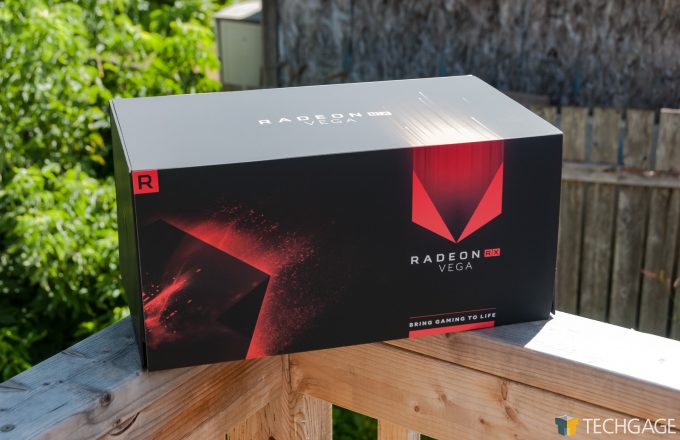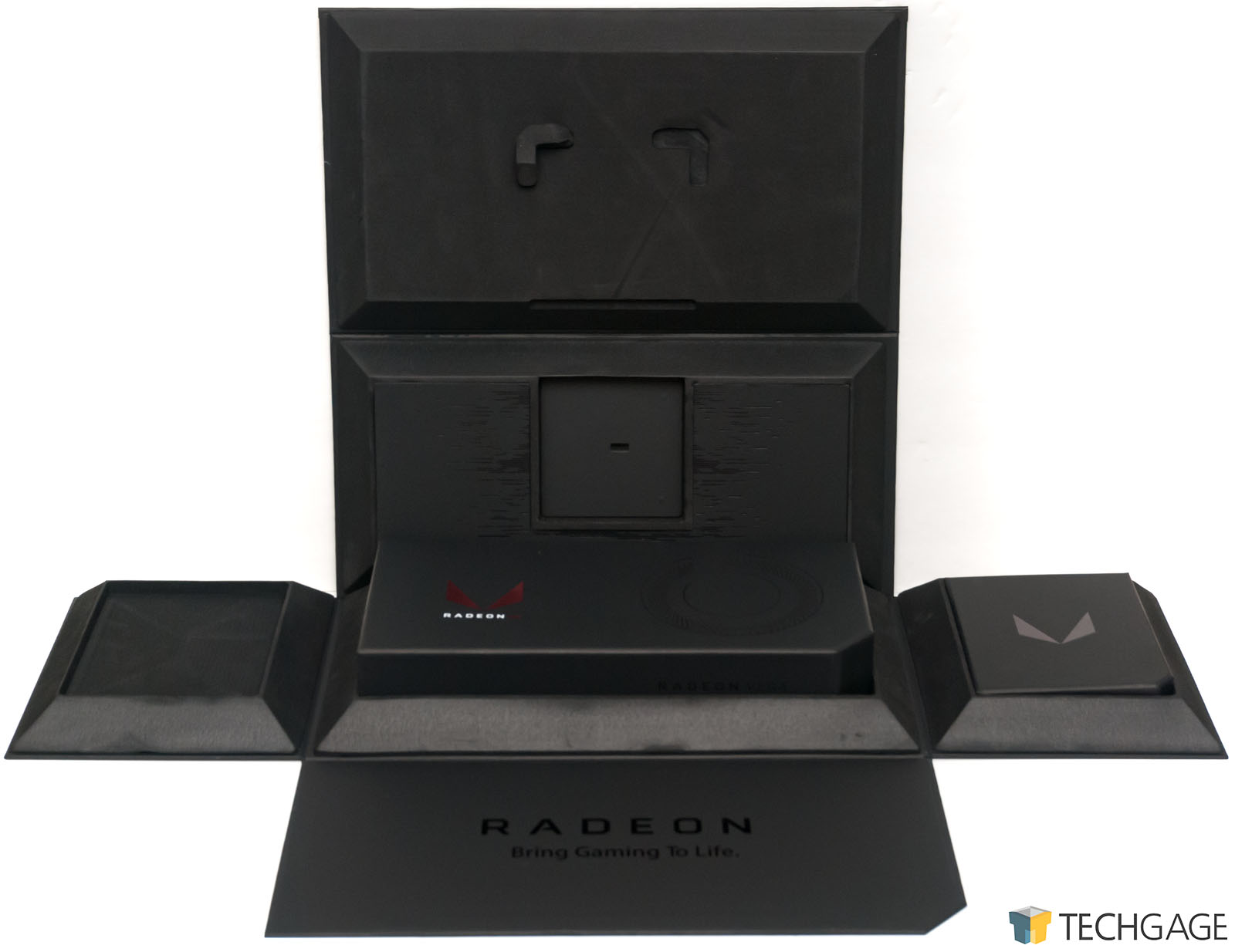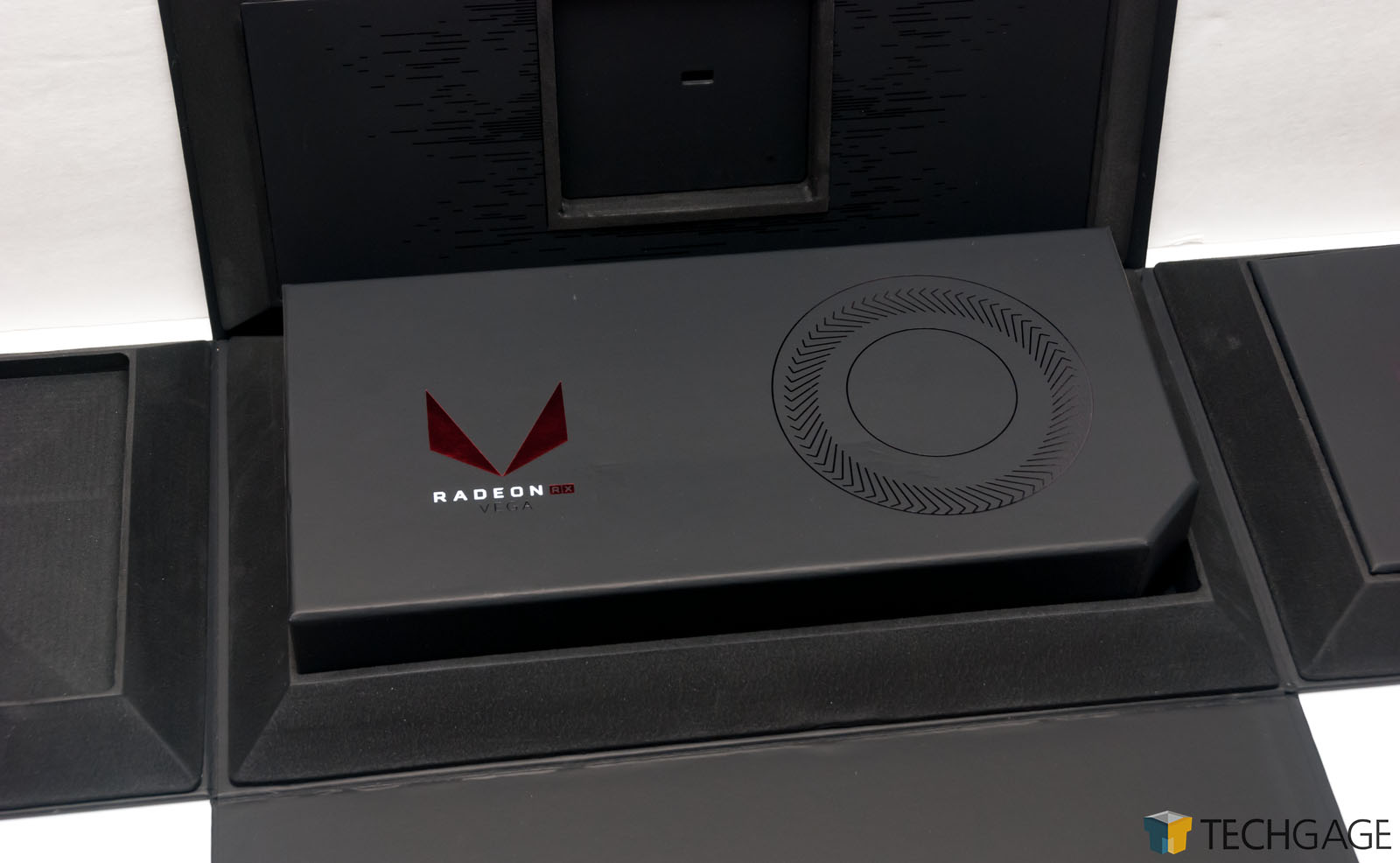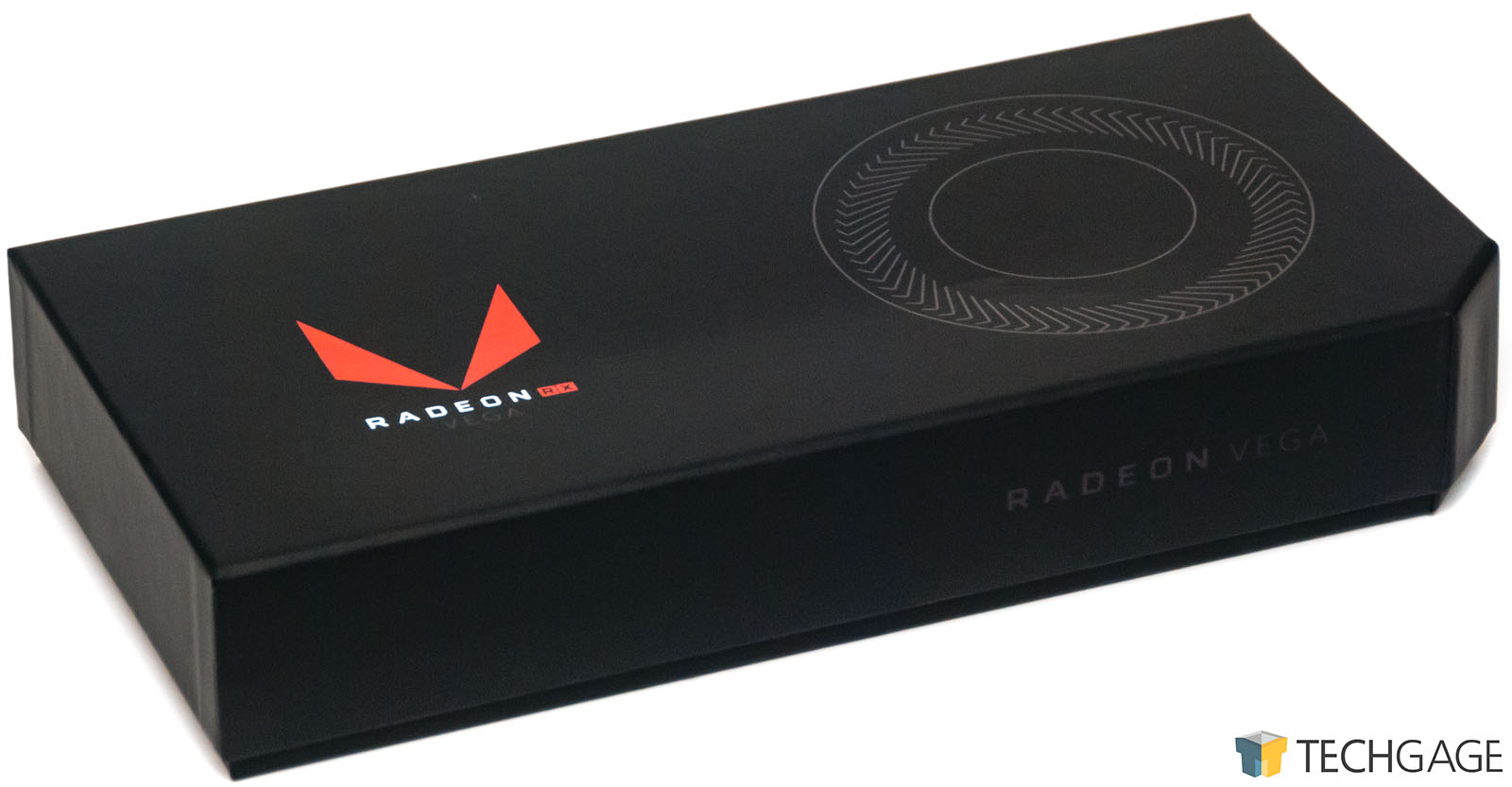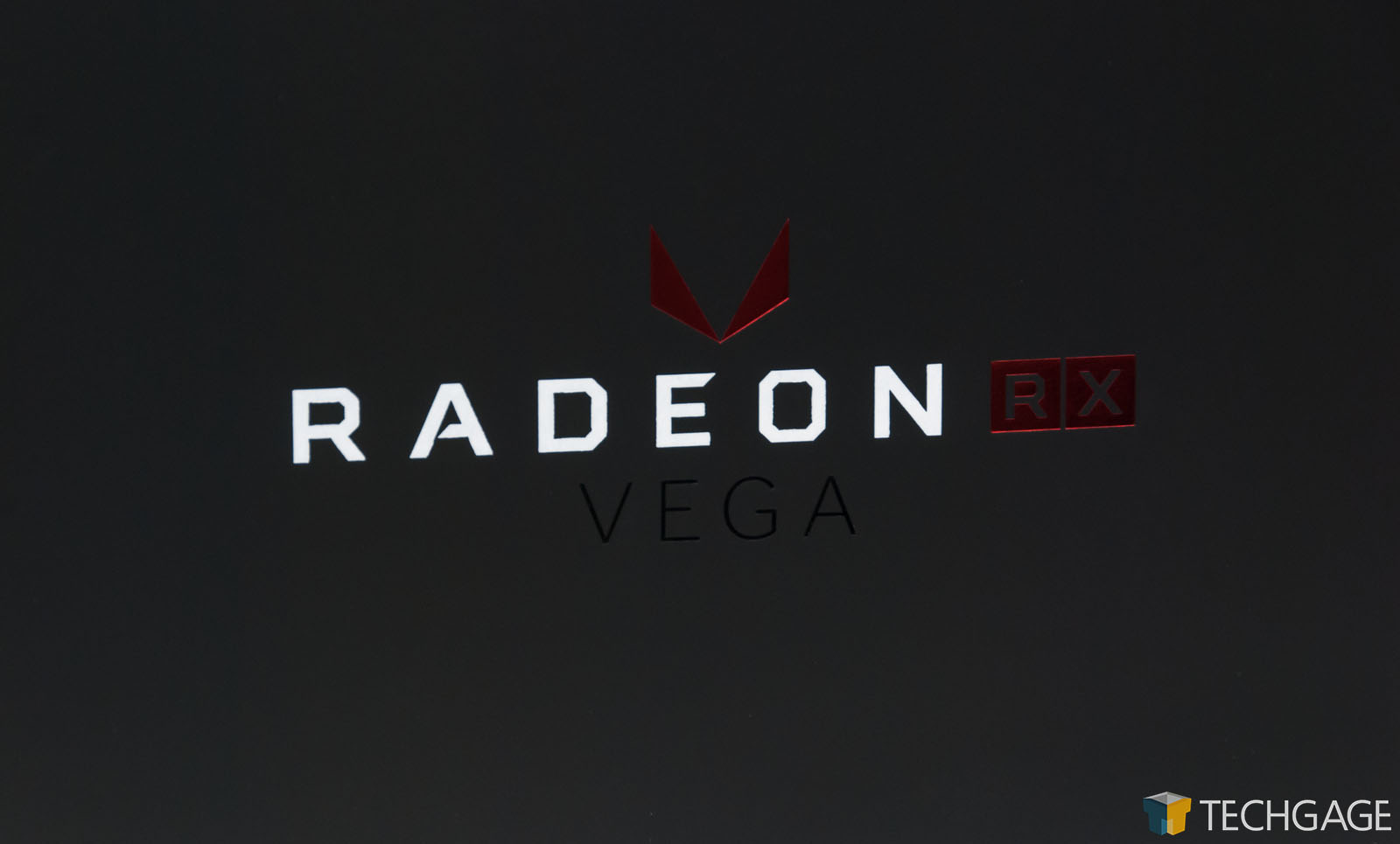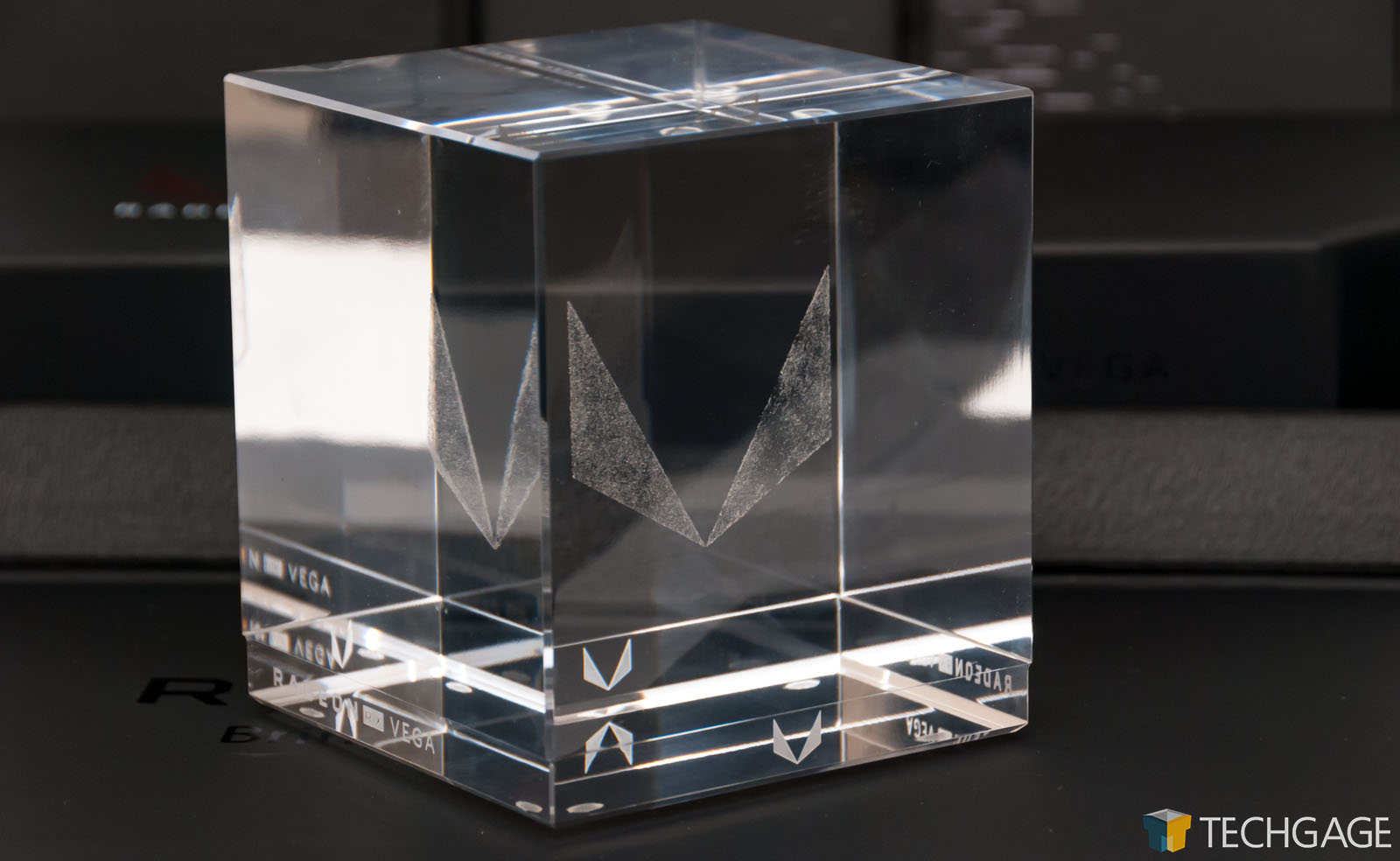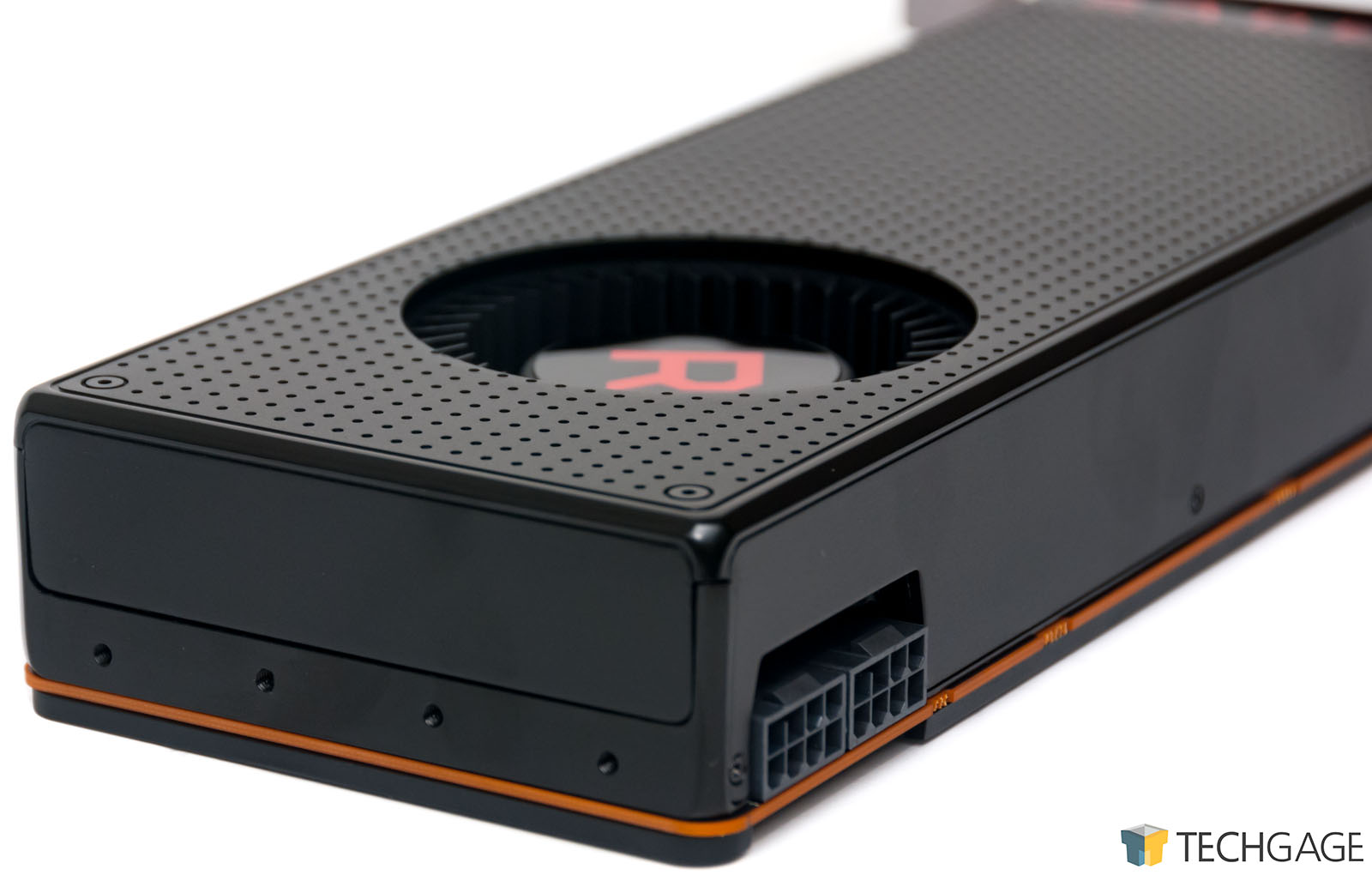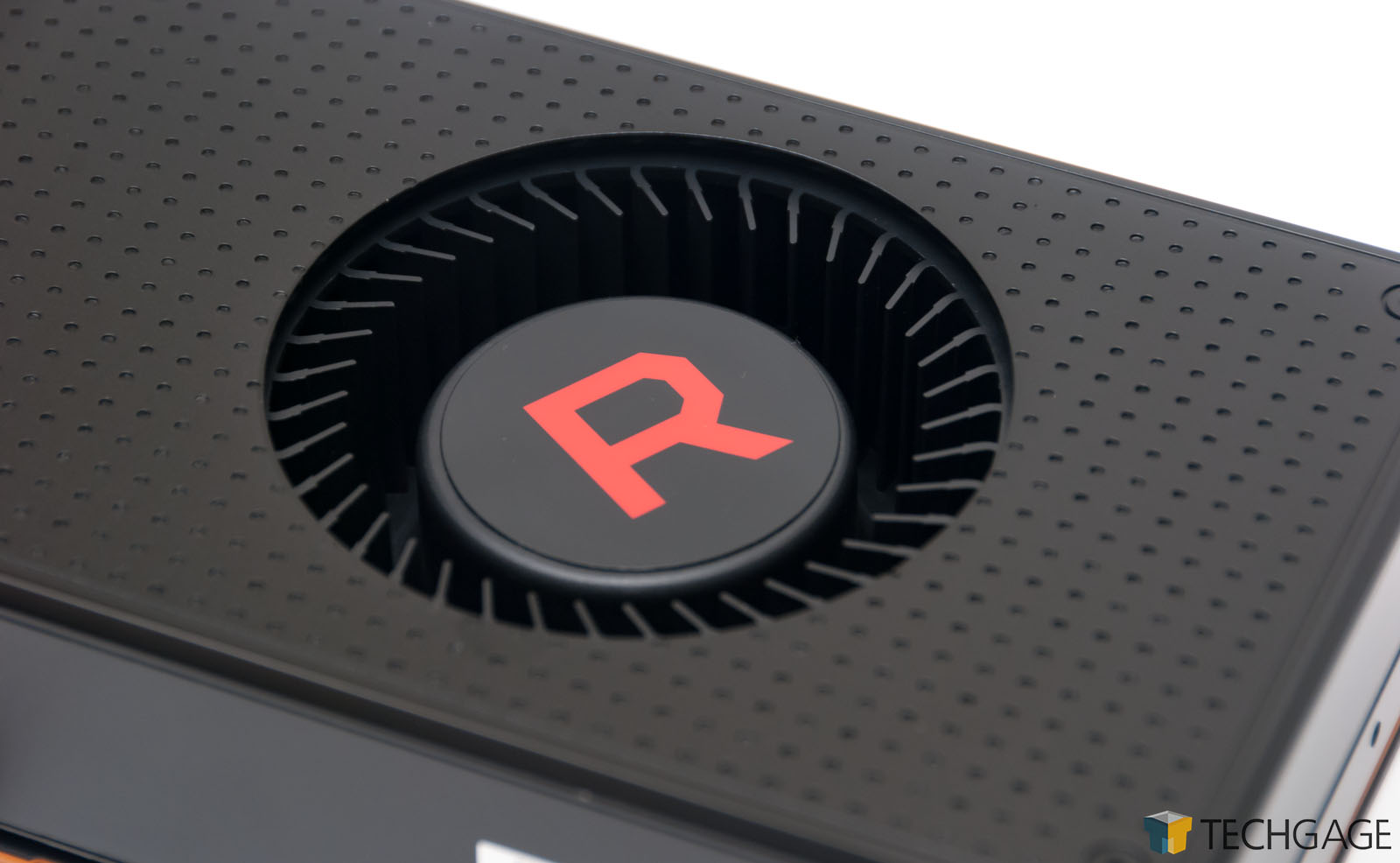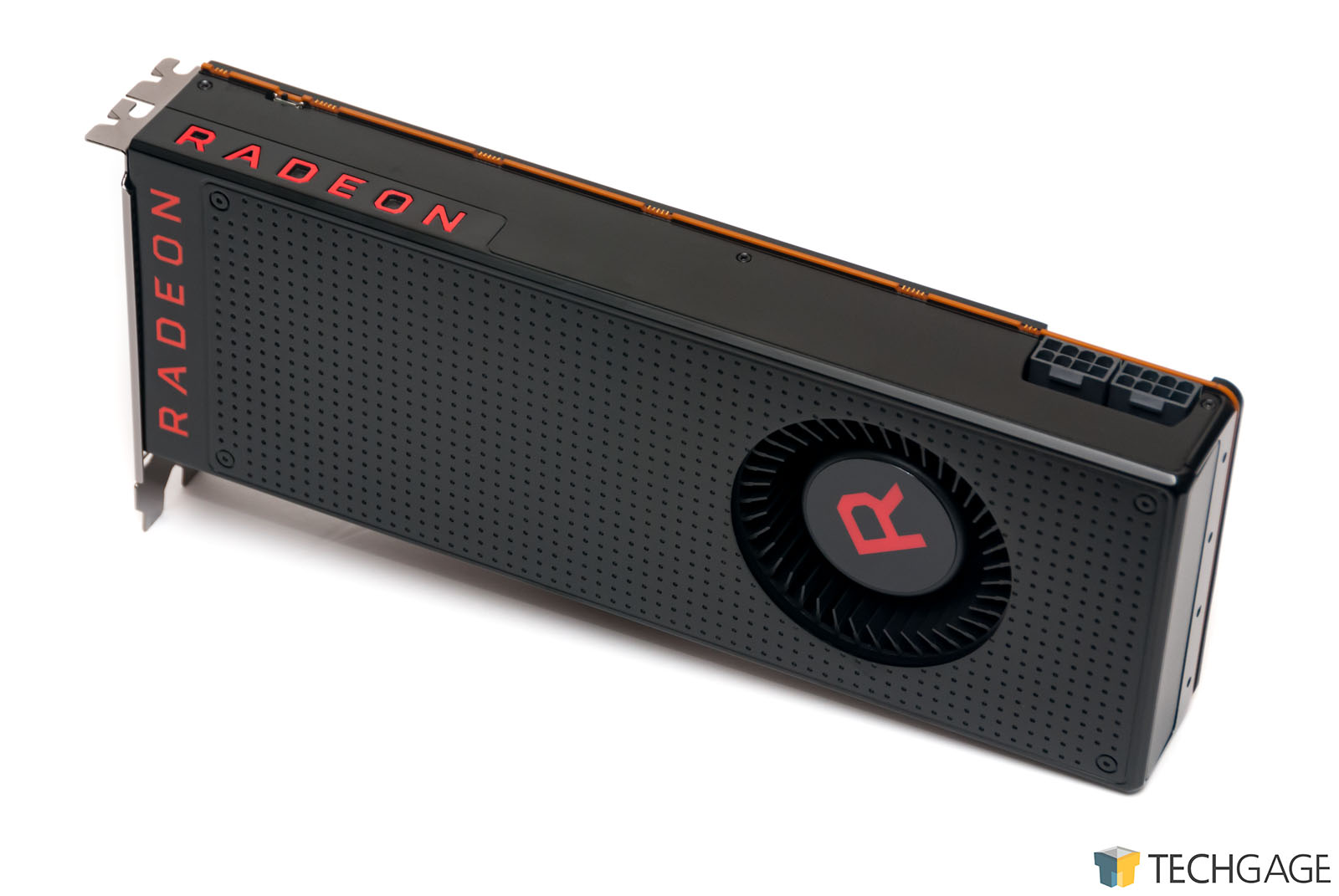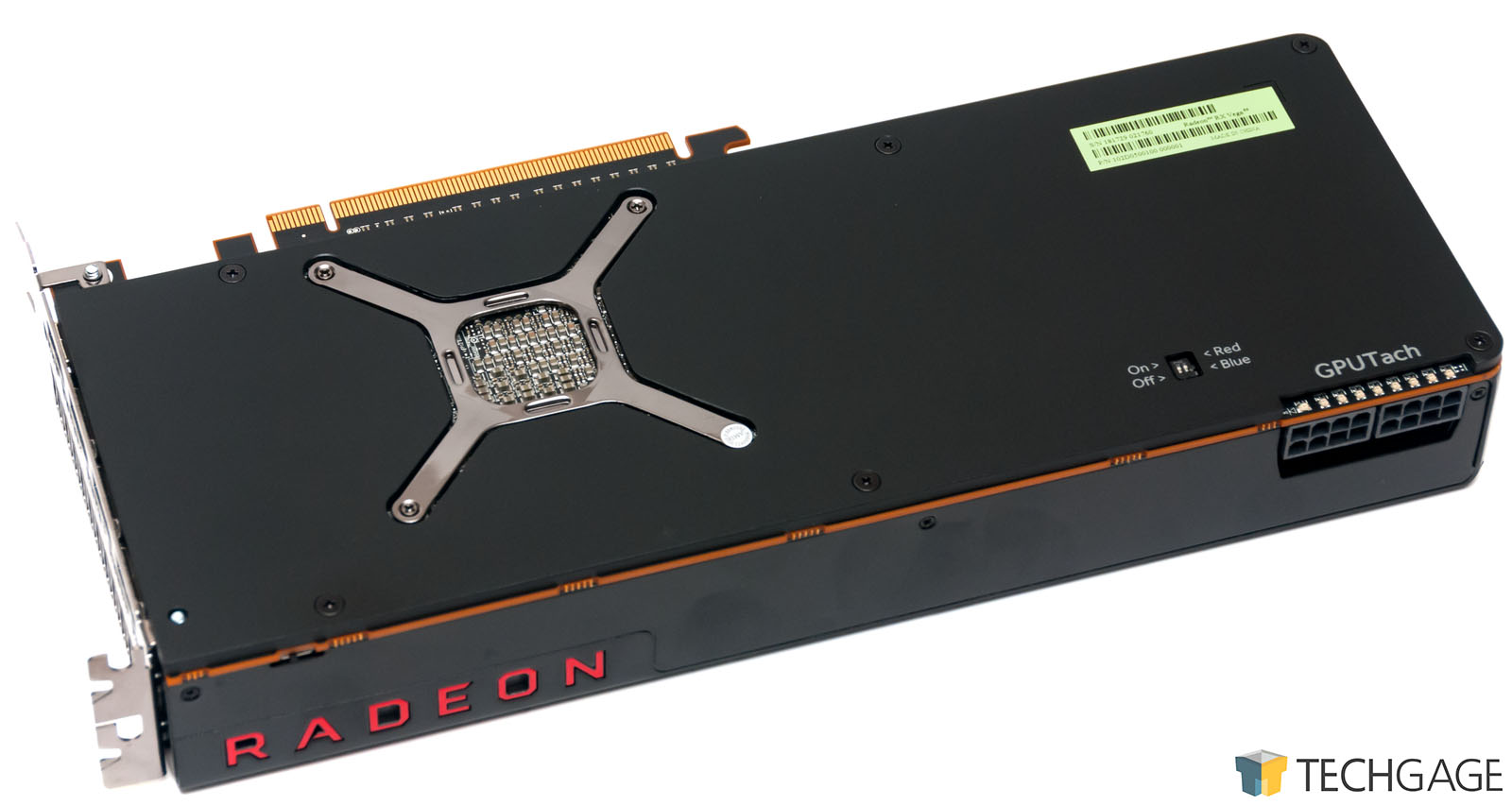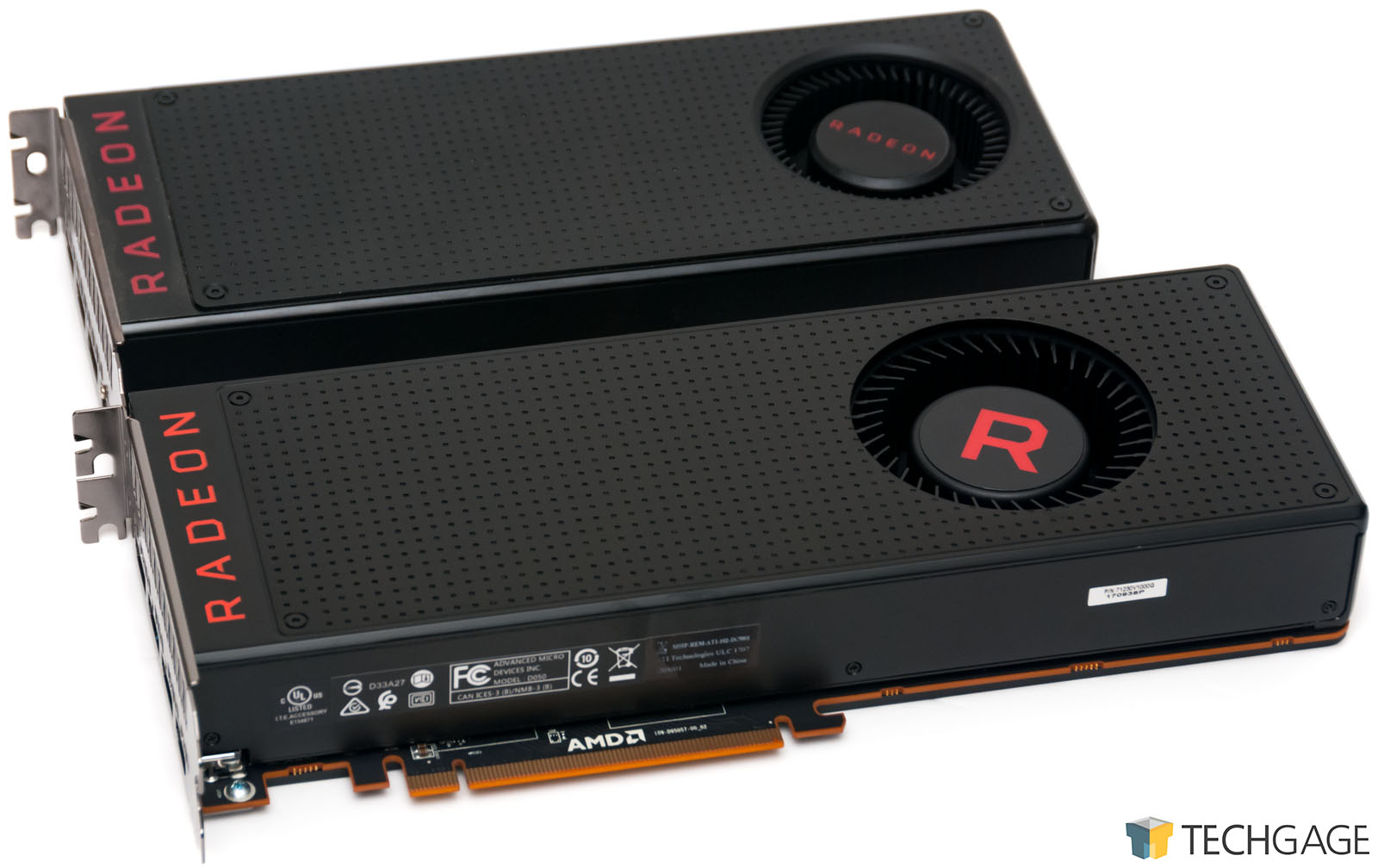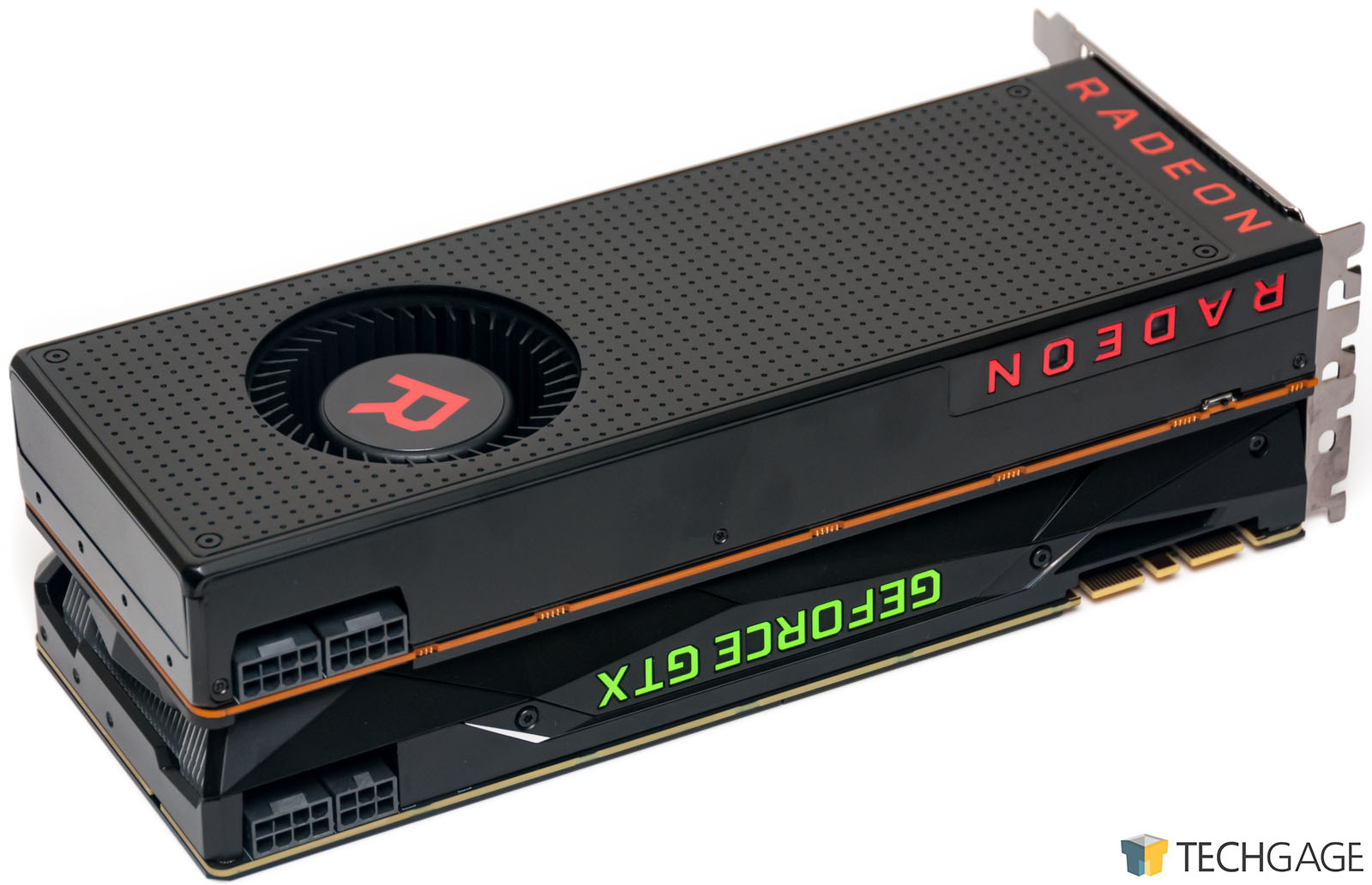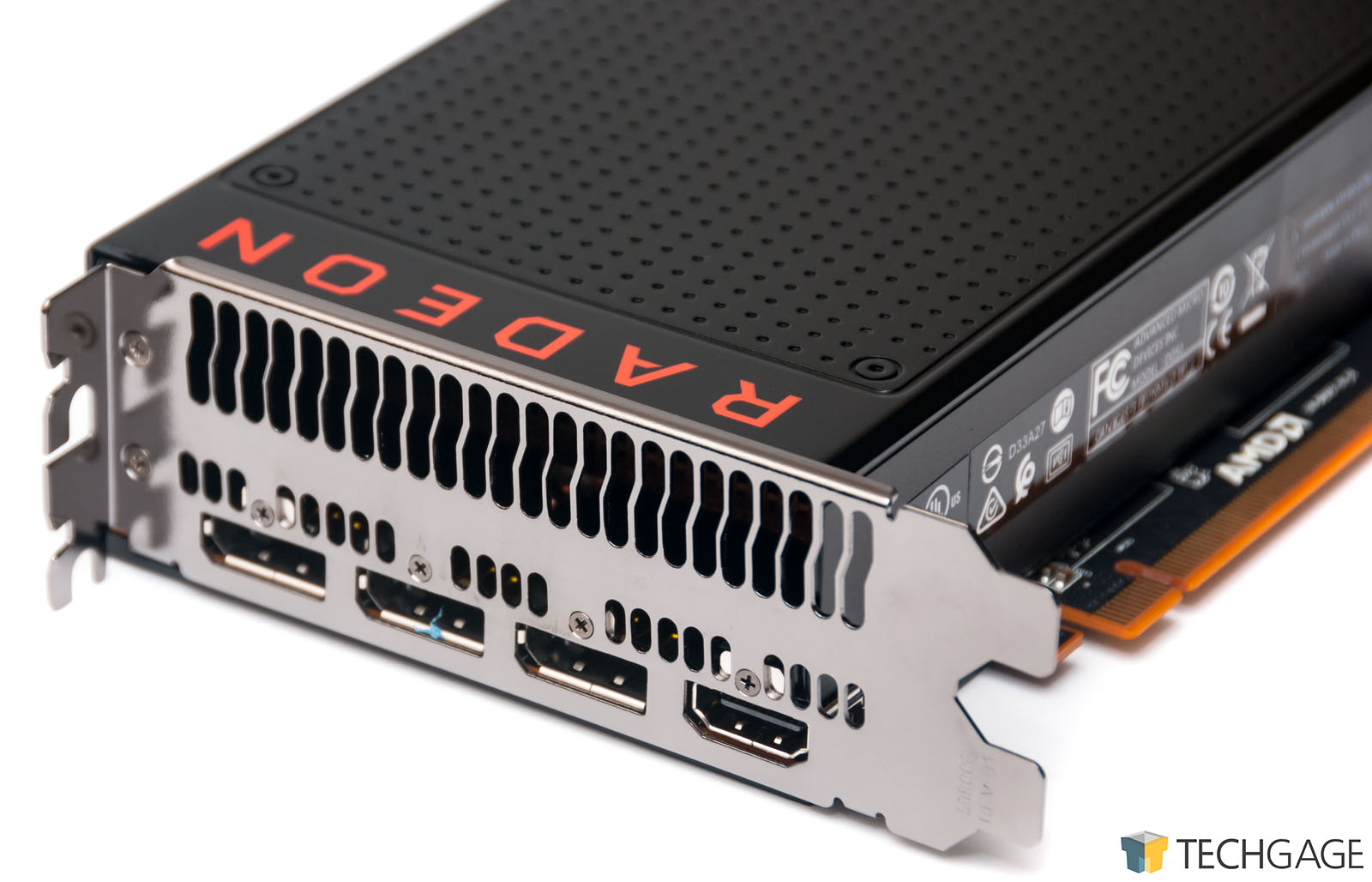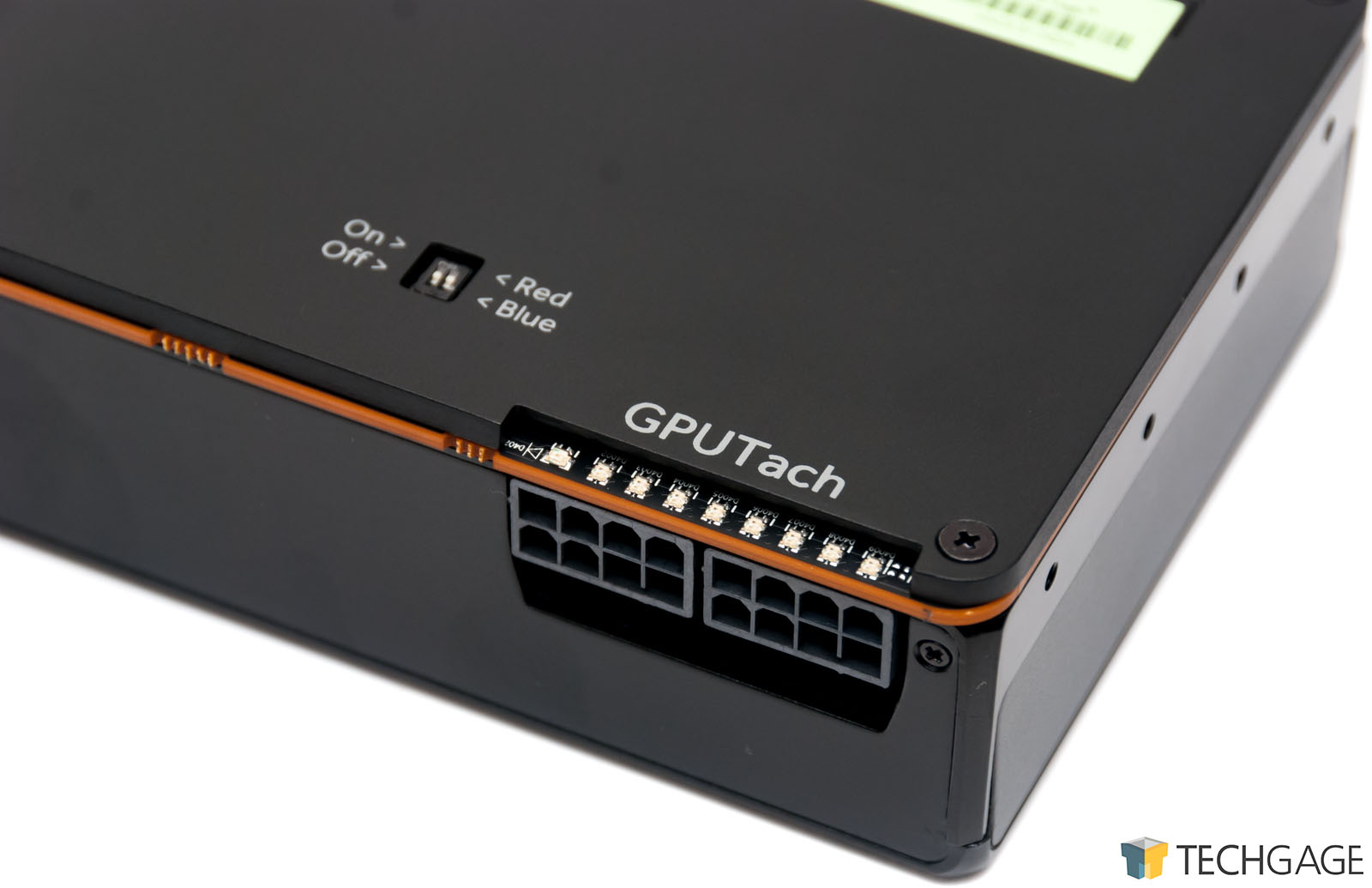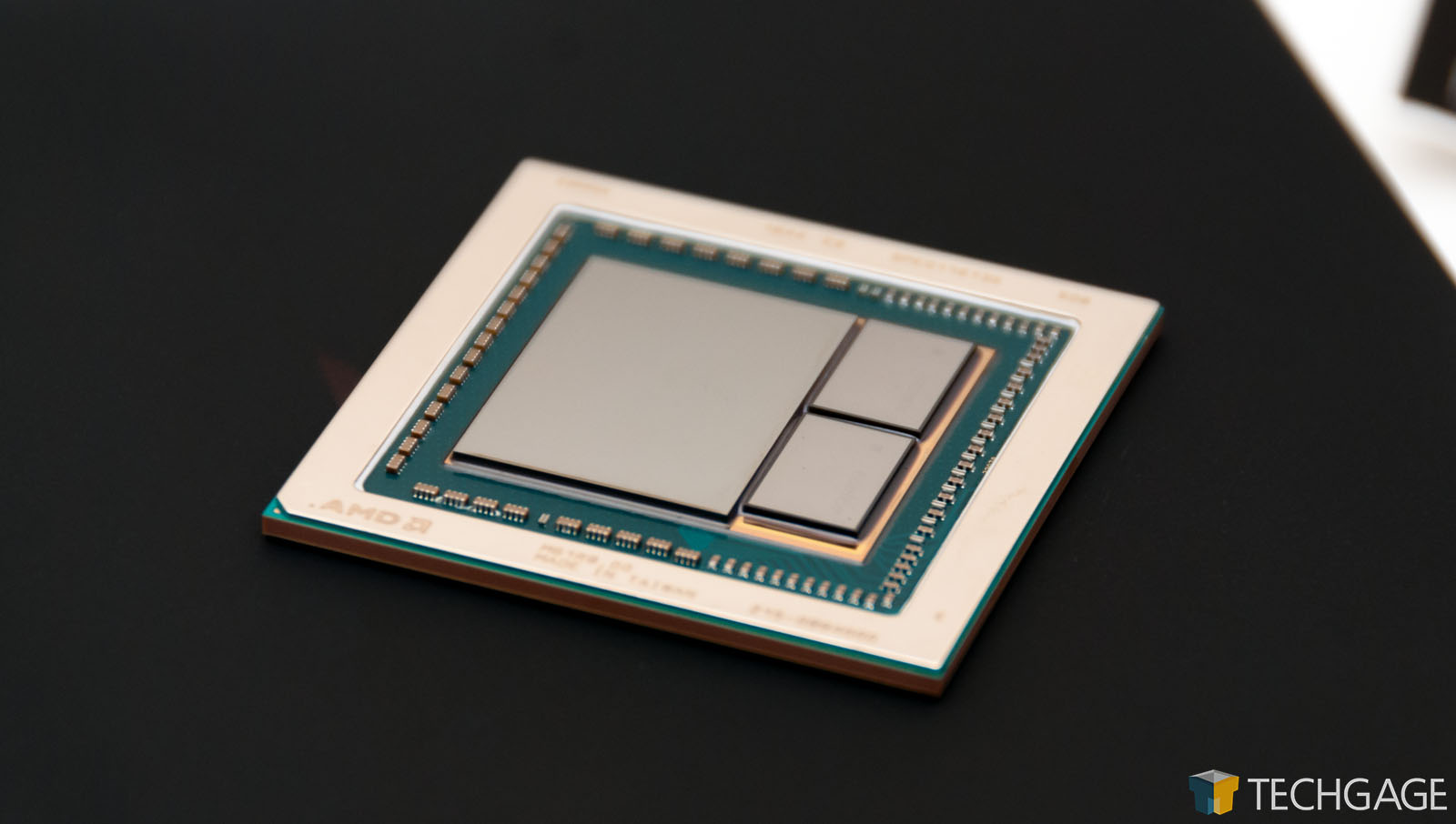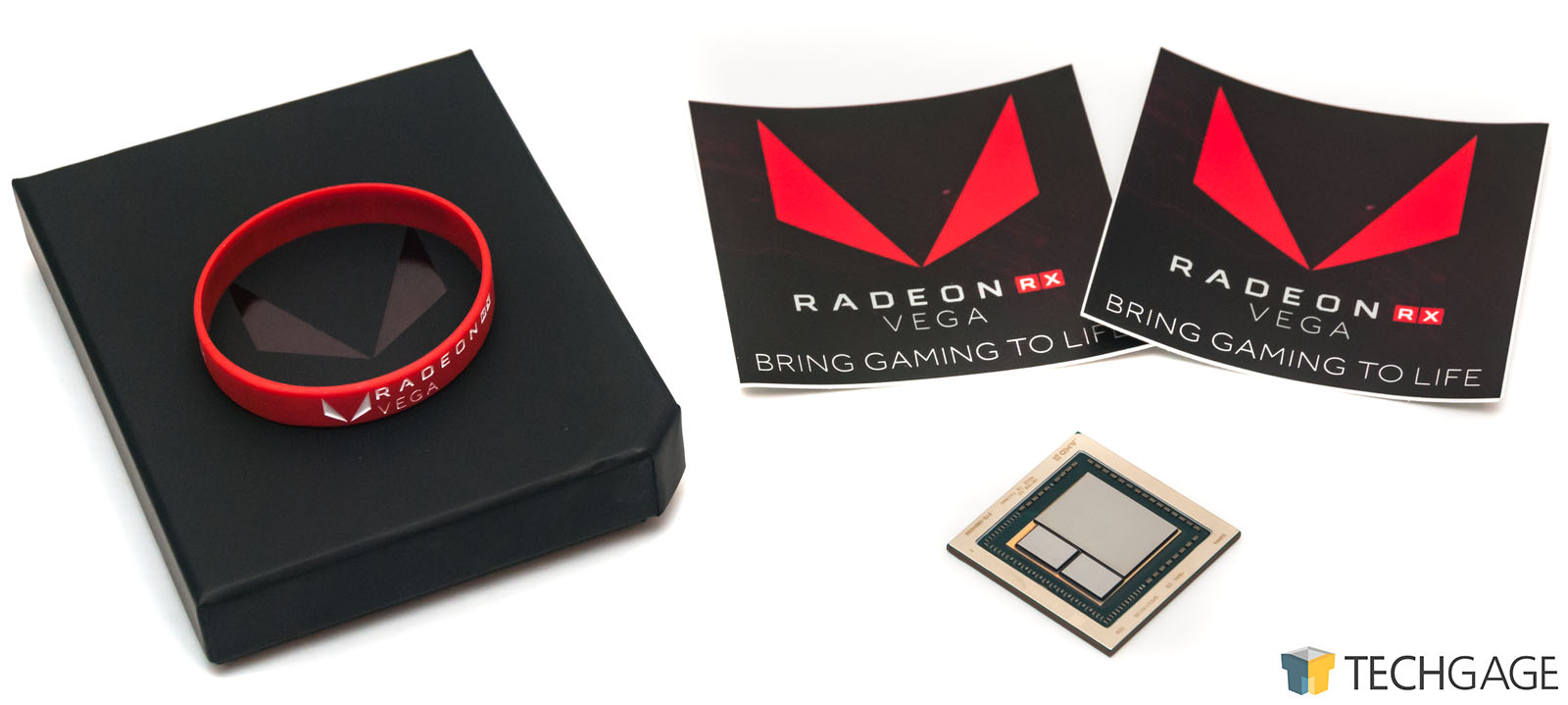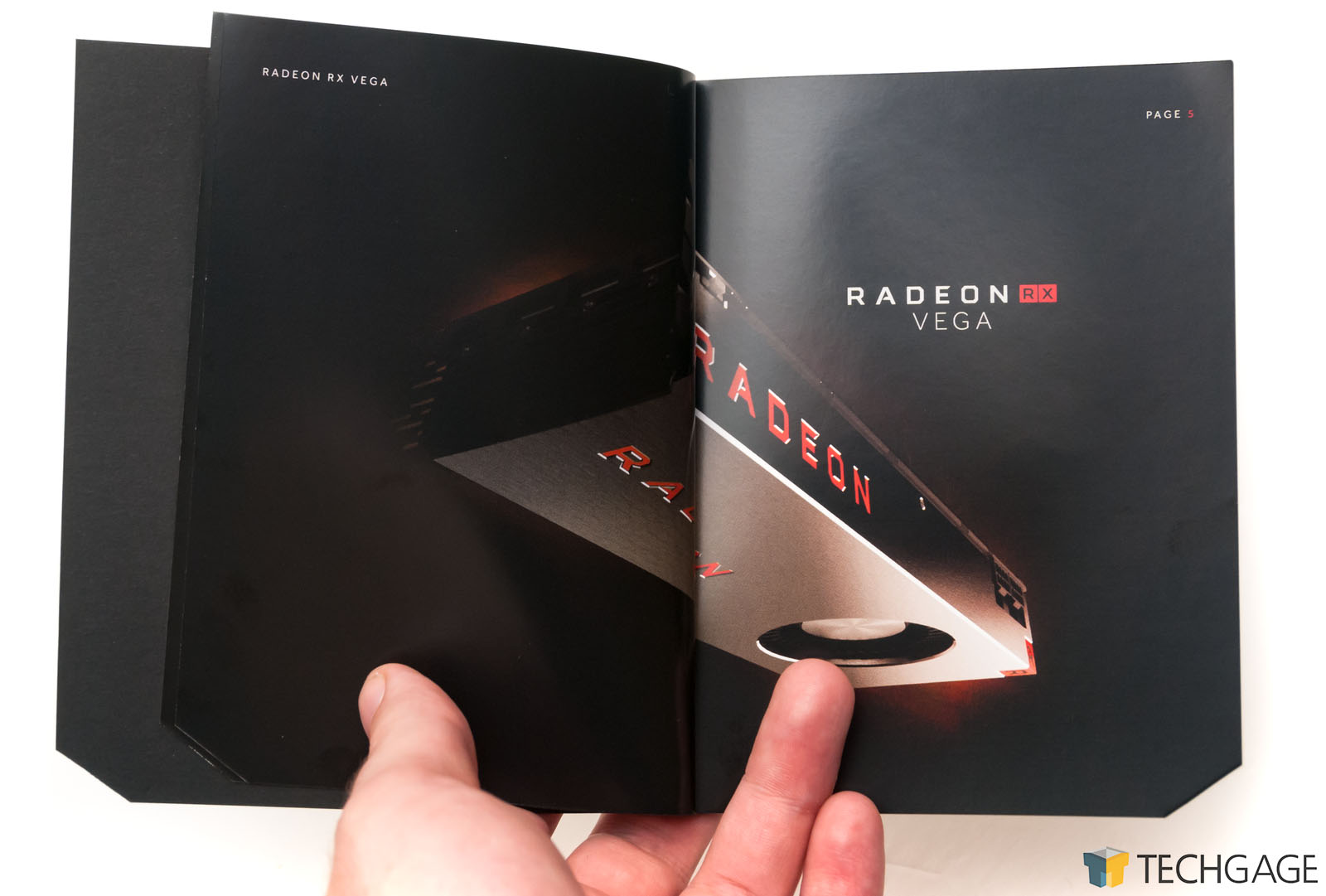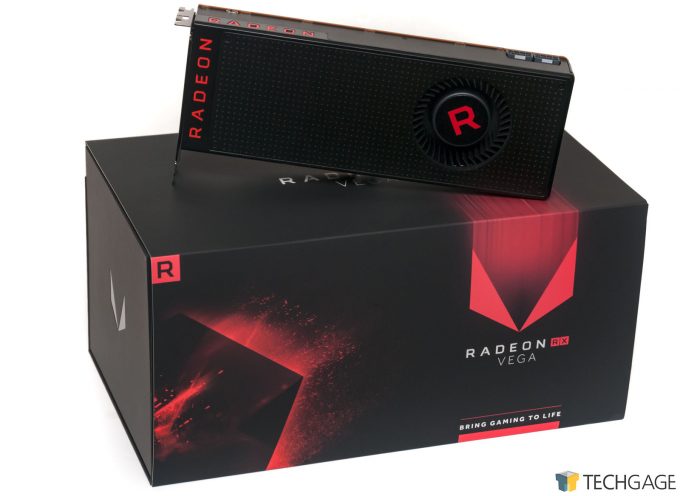- Qualcomm Launches Snapdragon 4 Gen 2 Mobile Platform
- AMD Launches Ryzen PRO 7000 Series Mobile & Desktop Platform
- Intel Launches Sleek Single-Slot Arc Pro A60 Workstation Graphics Card
- NVIDIA Announces Latest Ada Lovelace Additions: GeForce RTX 4060 Ti & RTX 4060
- Maxon Redshift With AMD Radeon GPU Rendering Support Now Available
AMD’s Radeon RX Vega 64 Has Landed – Let’s Unbox It!
Ugh, I just had to go and use that “unbox” word to bait people in, didn’t I? Well, since I’ve gotten your attention, we might as well actually unbox it then, aye? With much fervor, FedEx hit our doorstep today with a much larger box than I was anticipating. Inside? Well, it was the Radeon RX Vega 64 from AMD, of course (I bait people, but I don’t lie). To be clear from the get-go, this is not retail packaging, but apparently something for the press. An unboxing might be a little more useful with retail packaging, but nonetheless, let’s take a look.
There are a couple of reasons why this packaging is so grandiose, and all of them are assumptions on my part. This is a major launch for AMD, so the company probably wanted to make it feel special. If the latest Galaxy smartphone from Samsung or iPhone from Apple is so satisfying to unbox, why can’t a graphics card be? Indeed, I almost felt enlightened after disrobing this one.
Once the outer shell of the box is removed, it unfolds to expose its goodies. In the first shot above, you can see the packaging opened wide, although a couple of components are missing from this photo – such as a clear cube that’d act as a cool decoration, or paperweight (a much better paperweight than a dead GPU, which I’ve seen others use in the past!). Vega 64 is so special, that after opening this large packaging, it’s still hidden inside another box that helps keep it scratch-free during shipping. You can hopefully appreciate that photographing a completely see-through cube is a bit difficult, so hopefully the shots above do it some justice.
As for the card itself, this particular edition follows the design cues of the Polaris-based RX 480, which isn’t a bad thing. It might not be as wild-looking as NVIDIA’s top-end GPUs, but it has a clean aesthetic about it. Note the lack of a CrossFire bridge. During briefings a couple of weeks ago, AMD didn’t name-drop CrossFire even once, although as Steve from Gamers Nexus found out during a more private one-on-one, we do know that CrossFire support is present on Vega.
It’ll probably come as a surprise to no one, but Vega is probably going to draw more juice than NVIDIA’s Pascal, something the included dual 8-pin connectors will attest.
One thing that stands out like a sore thumb near the PCIe power connectors is GPUTach, an array of LEDs that light up during use to give you an idea of how hard you’re pushing the card. The switch found above this is used to change the color of these LEDs, presumably from red to blue.
The top-end Fury card was as large as a GPU could really get, while the RX 480 shaved a few inches off of the end. The RX Vega 64, by contrast, matches the size of NVIDIA’s top-end GPUs to a T.
As I found out the hard way (I didn’t even notice until the photos were edited), there is a small box found inside one of the inner sections of the larger box that includes a couple of surprises. Such as a completely bunk Vega chip that can be used to spruce up a boring desk, or turn into a ghetto necklace. This is a real Vega chip that simply didn’t make the cut. AMD decided to include these as a bonus to press.
In addition to the dead chip, AMD includes two stickers, as well as a bracelet. Those stickers carry over a slogan that you will hear a lot from AMD surrounding Vega: “Bring Gaming to Life”. I am not sure how the card will bring games to life more than any other, but it’s at least a lot better than “Rock Solid – Heart Touching”.
With that unboxing (sigh) out-of-the-way, let’s take another quick look at Vega’s specs, as revealed just under two weeks ago:
| AMD Radeon Series | Cores | Core Base MHz | Core Boost MHz | FP32 (TFLOPS) | FP16 (TFLOPS) | Memory | Bandwidth | TDP |
| Radeon RX VEGA 64 LCE | 4096 | 1406 | 1677 | 13.7 | 27.5 | 8192 MB | 484 GB/s | 345W |
| Radeon RX VEGA 64 | 4096 | 1247 | 1546 | 12.66 | 25.3 | 8192 MB | 484 GB/s | 295W |
| Radeon RX VEGA 56 | 3584 | 1156 | 1471 | 10.5 | 21 | 8192 MB | 410 GB/s | 210W |
| Radeon R9 Fury X | 4096 | 1050 | – | 8.6 | 4096 MB | 512 GB/s | 275W | |
| Radeon R9 Fury | 3584 | 1000 | – | 7.16 | 4096 MB | 512 GB/s | 275W | |
| Radeon R9 Nano | 4096 | 1000 | – | 8.19 | 4096 MB | 512 GB/s | 175W | |
| Radeon RX 580 | 2304 | 1257 | 1340 | 6.17 | 8192 MB | 256 GB/s | 185W | |
| Radeon RX 480 | 2304 | 1120 | 1266 | 5.83 | 8192 MB | 256 GB/s | 150W | |
| Radeon RX 570 | 2048 | 1168 | 1244 | 5.1 | 4096 MB | 224 GB/s | 150W | |
| Radeon RX 470 | 2048 | 926 | 1206 | 4.94 | 4096 MB | 211 GB/s | 120W | |
| Radeon RX 560 | 1024 | 1175 | 1275 | 2.61 | 4096 MB | 112 GB/s | 80W | |
| Radeon RX 460 | 896 | 1090 | 1200 | 2.15 | 4096 MB | 112 GB/s | 75W | |
| Radeon RX 550 | 512 | 1100 | 1183 | 1.21 | 4096 MB | 112 GB/s | 50W |
Further proof that AMD’s Vega draws a bit more power (and thus generates more heat) than the competition seems likely given the fact that a liquid-cooled version of the same card is found on the top of the chain, performing a lot better than the air-cooled version we have (+159MHz is no joke). Well, there’s also the fact that 295W is a lot higher than 250W (eg: GTX 1080 Ti), but the only important values are those to be soon found in reviews, because AMD and NVIDIA measure TDP differently.
When these cards hit the market, the version shown above will cost $499 USD, while the one with super-slick silvery shroud will cost $100 more (but can be found as part of a Radeon Pack that includes coupons and games). The liquid cooled version of the card will cost $699.
The embargo for both Vega 64 and Vega 56 is mere days away, so go ahead and enjoy your weekend, then keep checking back very early next week for our full look!




